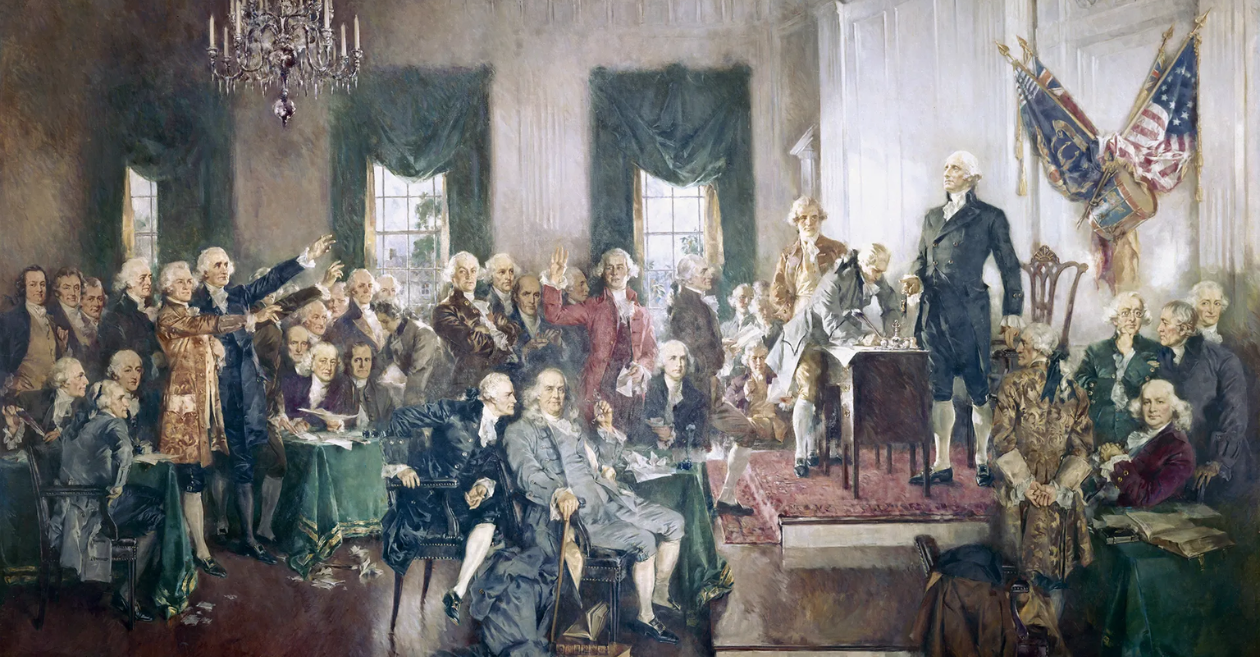


The U.S. Constitution, a beacon of democracy, lays the groundwork for the nation's governance. At its core are five main points that shape the very essence of the American political landscape. The preamble sets the tone, declaring the Constitution's purpose: "We the People of the United States, in Order to form a more perfect Union, establish Justice, insure domestic Tranquility, provide for the common defence, promote the general Welfare, and secure the Blessings of Liberty to ourselves and our Posterity, do ordain and establish this Constitution for the United States of America." This poetic introduction encapsulates the aspirations of a nation striving for unity, justice, and individual freedoms.
The first pillar allocates legislative powers to Congress, comprising the Senate and the House of Representatives. This division ensures a representative government, with senators elected by state legislatures and representatives by the people. The intricate balance prevents tyranny and ensures laws reflect the diverse interests of the nation.
Article II vests executive authority in the President, charged with enforcing laws and serving as Commander-in-Chief of the armed forces. This provision establishes a powerful yet accountable executive, fostering stability and responsiveness to the evolving needs of the nation.
The third branch, the judiciary, is outlined in Article III. The Supreme Court and inferior courts interpret laws and ensure their constitutionality. This separation of powers prevents any one branch from dominating, creating a system of checks and balances critical to American governance.
The Bill of Rights, the fourth pillar, safeguards individual liberties. The first ten amendments articulate essential rights, from freedom of speech and religion to the right to bear arms. These amendments underscore the Constitution's commitment to protecting citizens from potential government overreach, a crucial aspect of the nation's identity.
The concept of federalism, the fifth pillar, is enshrined in Article IV. It establishes the relationship between states and the federal government, emphasizing cooperation and unity. This federalist structure accommodates regional differences while fostering a collective identity, exemplifying the strength derived from diversity.
The Constitution's adaptability is showcased through the amendment process outlined in Article V. As of now, 27 amendments have been ratified, reflecting societal evolution and changing perspectives. This ability to amend ensures the Constitution remains a living document, relevant to contemporary challenges.
To enhance understanding, let's delve into some key records about the U.S. Constitution:
| Amendment | Date Ratified | Key Provisions |
| 1 | December 15, 1791 | Freedom of speech, religion, press, assembly, and petition |
| 19 | August 18, 1920 | Women's right to vote |
| 26 | July 1, 1971 | 18-year-olds' right to vote |
These records offer a snapshot of the constitutional journey, illustrating pivotal moments in American history.
In conclusion, the U.S. Constitution's five main points serve as the bedrock of a nation founded on principles of democracy, individual liberties, and a commitment to unity. Understanding these pillars is not merely a historical exercise but a key to comprehending the ongoing experiment in governance that is the United States of America.
The Preamble sets the overarching goals of the Constitution, expressing the collective vision of "We the People" for a more perfect union, justice, tranquility, defense, welfare, and liberty.
The Constitution achieves a balance of power by allocating distinct responsibilities to the Legislative (Article I), Executive (Article II), and Judicial (Article III) branches, preventing any one branch from monopolizing authority.
The Bill of Rights, comprising the first ten amendments, safeguards fundamental freedoms such as speech, religion, and the right to bear arms. It serves as a critical protection against potential government overreach.
Federalism, outlined in Article IV, establishes the relationship between states and the federal government. It allows for regional differences while fostering cooperation and a sense of unity among diverse states.
Yes, the Constitution's adaptability is ensured through the amendment process outlined in Article V. With 27 amendments ratified to date, the Constitution remains a dynamic and evolving document, responsive to the changing needs of society.

In politics, some names shine bright

In the big picture of American leader

LaToya Cantrell shines brightly in th

Ever heard of Dexter King and wondere

In the complex world of Israeli polit

In the wide world of legal experts, t
Trash to treasure: How Google thinks
Spring Fashion Show at the University
Matter of Impact: April updates from
Android Enterprise security delivers
We are not gonna make spamming
Copyright By@TheWebTrends - 2023
BACK TO TOP